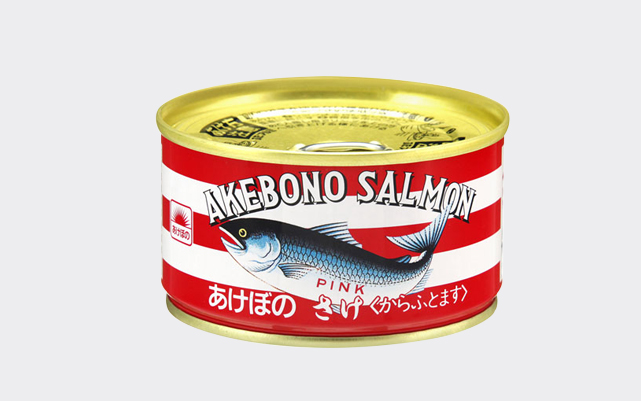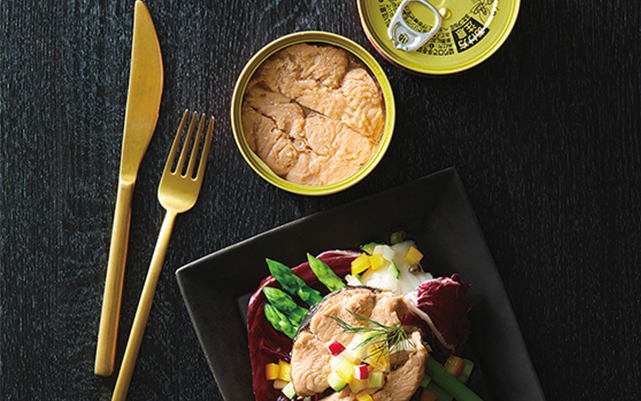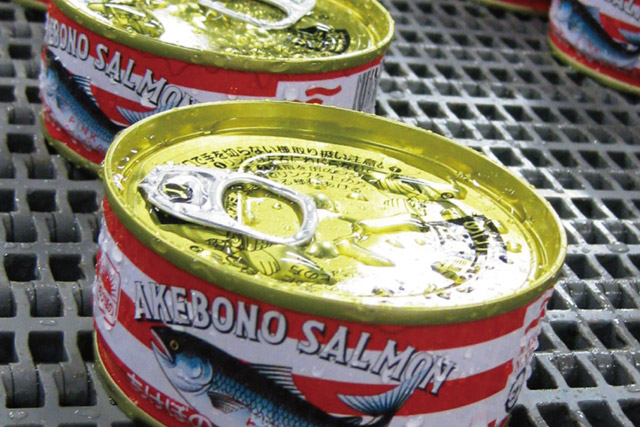Nourishing the nation for 100 years
Akebono Salmon is probably the best-known brand of canned salmon in Japan. That’s no surprise when you consider that it’s been feeding Japanese households for over a century.
The Akebono Salmon story begins in 1907, when the company’s two founders were among the first to venture into the icy waters north of Japan in search of a reliable food supply. They established a successful fishery there, and in 1910 they began canning salmon for export, mainly to the United Kingdom, in order to earn funds to reinvest in their enterprise. This canned salmon business was the foundation of Akebono Salmon.
Not everything went smoothly for the brothers. Manufacturing machinery was considered a luxury at the time, and negotiating its purchase was challenging. But their determination paid off in 1913, when their company became the first in Japan to mass-produce canned goods hygienically and safely. The brand name they chose was “Akebono”—literally, “dawn.”
In the decades that followed, Akebono Salmon became a valuable source of protein for the Japanese people during times of scarcity. In 1923, it helped feed the hungry in the aftermath of the Great Kanto Earthquake. During the straitened postwar period, Akebono Salmon became popular as a convenient and delicious way to stretch household budgets further.
As demand for Akebono Salmon rose nationwide, Maruha Nichiro responded with further improvements, such as easy-open cans that eliminated the need for can openers. Akebono Salmon soon became a staple of the company’s lineup, viewed with affection by generations of Japanese consumers.
Salmon is a nutrient-rich source of protein. It contains nine essential amino acids which cannot be produced by the human body, as well as Astaxanthin and omega-3 fatty acids such as DHA and EPA and. Akebono Salmon is made using fresh pink salmon, sterilized at high temperatures and sealed in airtight cans to preserve its delicious flavor for up to three years. No additives or preservatives are used—just salt.
Because the preservation process itself isn’t energy-intensive, Akebono Salmon is both environmentally and economically friendly. This also makes it a popular emergency food. In fact, after the 2011 Great East Japan earthquake and tsunami, new awareness of the importance of maintaining a rotating stock of canned food resulted in a new generation of householders rediscovering just how delicious Akebono Salmon was.
Developed to rescue the nation from food shortages, Akebono Salmon stuck with the Japanese people through thick and thin over the century that followed, supporting them during natural disasters, postwar deprivation, and even economic crises. It still commands the largest market share in Japan’s canned salmon industry and looks sure to be a beloved staple for generations to come.


March, 2019


